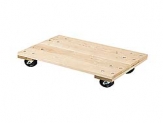 An examination of the ergonomics of workers’ movement can improve productivity, reduce the amount of workplace injuries, and lower costs, according to a report compiled by the California Occupational Safety and Health Administration.
An examination of the ergonomics of workers’ movement can improve productivity, reduce the amount of workplace injuries, and lower costs, according to a report compiled by the California Occupational Safety and Health Administration.
Whenever materials are handled in a warehouse, manufacturing facility or other workplace, there is always the opportunity for wasted energy, wasted time, and injury. Improving the fit between the demands of the specific work tasks and the capabilities of your employees can result in substantive benefits, including:
- Preventing or reducing injuries
- Cutting costs by reducing or eliminating production bottlenecks, error rates and rejects, workmen’s comp claims, turnover, absenteeism and retraining
- Reducing workers’ exertion by decreasing forces in pushing and pulling materials, lifting and handling.
- Lowering the risk factors for musculoskeletal disorders, such as awkward postures from reaching into containers
- Increasing worker morale, product quality, level of service, and productivity
Exposure to Ergonomic Risks
When manual material handling tasks are performed repeatedly or over long periods of time, they can expose workers to physical risk factors such as fatigue or injury. Primary risk factors include awkward postures such as bending and twisting; repetitive motions such as frequent lifting, reaching or carrying; and forceful exertions such as lifting or carrying heavy loads.
Other risk factors include pressure points, such as leaning against parts or surfaces with hard or sharp edges, or otherwise making contact with potentially hazardous loads, and static postures such as maintaining fixed positions for an extended period of time.
When workers are exposed to one or more of these factors for a long time, the result can be fatigue or discomfort. Over time, this can lead to injuries to the wrists, hands, shoulders, back or other parts of the body, including damage to muscles, blood vessels, nerves, ligaments and tendons.
Other contributing factors include environmental conditions such as extreme heat, cold, poor lighting, and excessive noise.
Fitting the Task to the Worker
Ergonomic improvements are designed to improve the fit between the demands of the work tasks and the capabilities of the work force. The two primary types of ergonomic improvements are engineering improvements and administrative improvements.
Engineering improvements are physical changes to the workplace that result in reduced ergonomic stress or threatened dangers to employees. This can include such things as rearranging work stations, modifying or replacing tools, and redesigning products and materials.
Administrative improvements involve observing how workers perform specific tasks then developing ideas for improving work practices. Examples include alternating heavy tasks with light tasks, providing recovery time between tasks that require exertion, and rotating workers through jobs that use different muscles, body parts and postures.
Other examples of administrative improvements include providing a variety of jobs to eliminate or reduce repetition, modifying work practices so that work is performed within the zone above the knees and below the shoulders, and adjusting work schedules, work practices, or work pace.
Bahrns Offers Ergonomic Solutions
Specialized equipment also can be used to improve ergonomics in the workplace. These include such things as moving dollies.
Barhns carries a complete supply of dollies made from many different materials and designed for a wide variety of tasks, including carpet-end dollies, pallet-sized dollies, plastic dollies, and furniture dollies. You can check out Bahrns’ selection or industrial grade dollies by clicking here.
